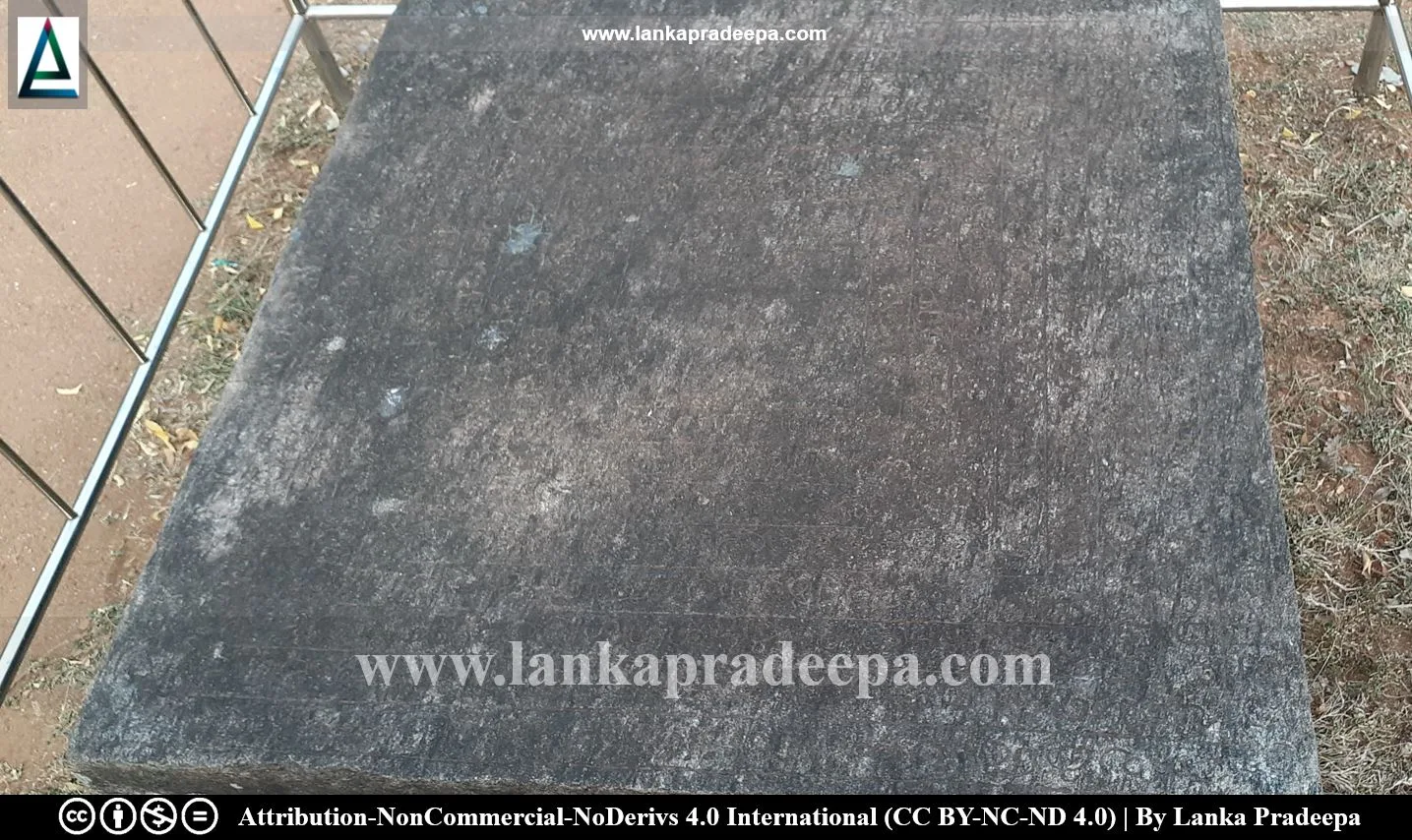
The Kalinga Park Stone Seat Inscription of King Nissankamalla (Sinhala: නිශ්ශංකමල්ල රජුගේ කලා ක්රීඩා විනෝද මණ්ඩප ගල් ආසන ලිපිය) is presently placed near the Council Chamber Building within the premises of Dipa Uyana in Polonnaruwa Ancient City, Sri Lanka.
The Seat
The stone seat on which the inscription has been engraved is 3 ft. 6 in. square (Ranawella, 2007). The inscription, in eight lines, runs parallel to each side of the square and leaves a blank space of 12 in. by 11 in. at the centre (Ranawella, 2007).
Content
The script and the language of the inscription are Sinhala of the second half of the 12th century A.D. and scholars have dated this record to the reign of King Nissankamalla [(1187-1196 A.D.) Ranawella, 2007; Wikramasinghe, 1928]. The inscription records a usual panegyrical account of some of Nissankamalla's acts and munificence as given in the Dambulla Inscription and Hetadage Portico Slab Inscription (Ranawella, 2007). It mentions the victories the king gained in the wars with India and various donations to the people, renovations of temples and economic development achieved.
The inscription finally says that the stone seat was the one on which the king sat whenever he witnessed the musical performance in the Kalinga Park (Dipa Uyana) and it was brought for this purpose from Enderagalla, probably the present Enderu-gala village situated about 5 miles from Sigiriya (Ranawella, 2007; Wikramasinghe, 1928).
References
1) Ranawella, S., 2007. Inscription of Ceylon. Volume VI. Department of Archaeology. ISBN: 978-955-91-59-61-2. pp.108-109.
2) Wikramasinghe, D. M. D. Z., 1928. Epigraphia Zeylanica: Being lithic and other inscriptions of Ceylon Vol II: London. Published for the government of Ceylon by Humphrey Milford, pp.130-134.

